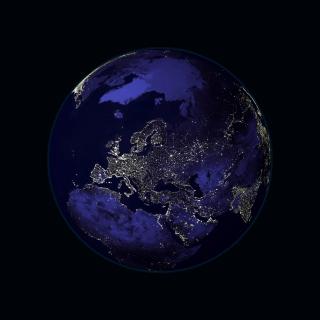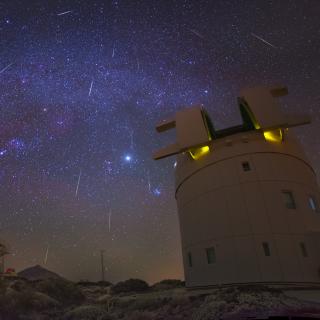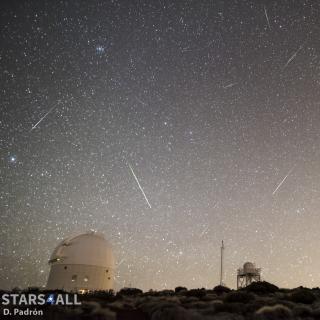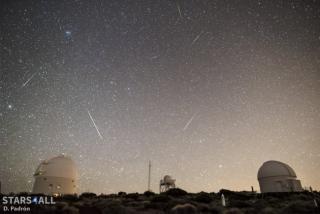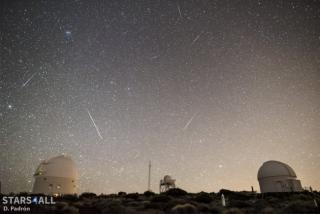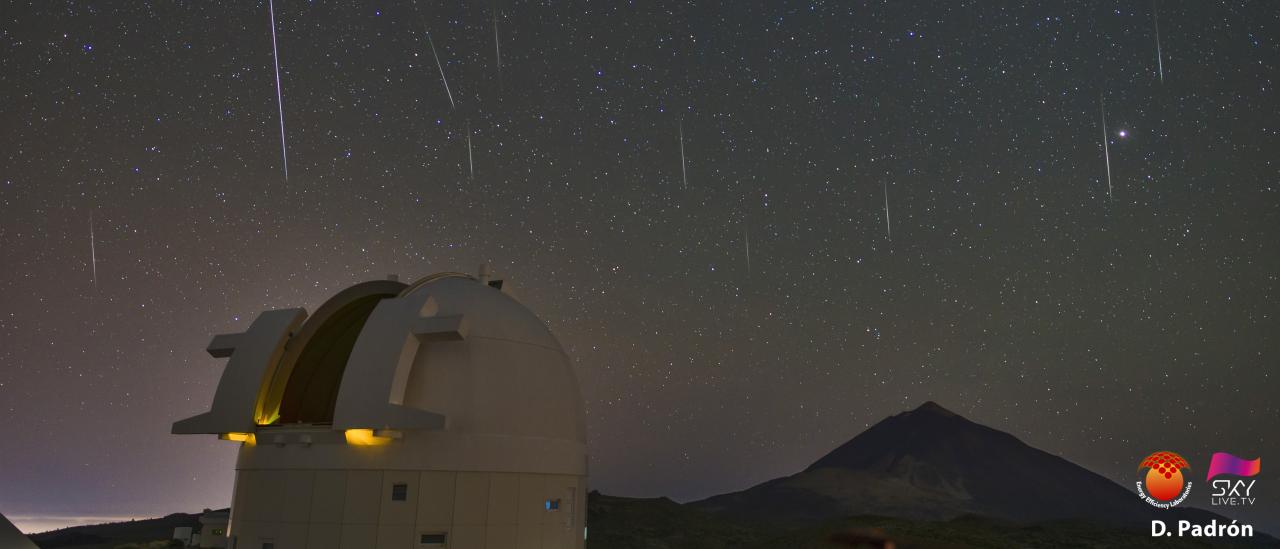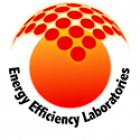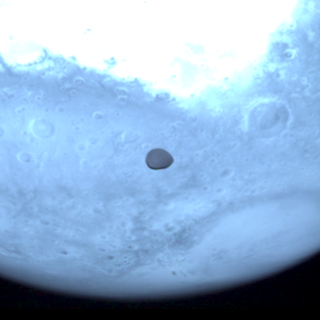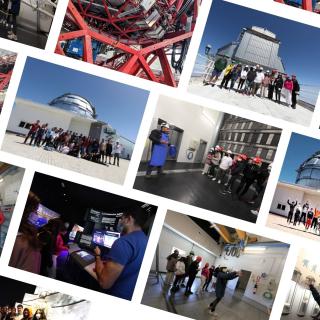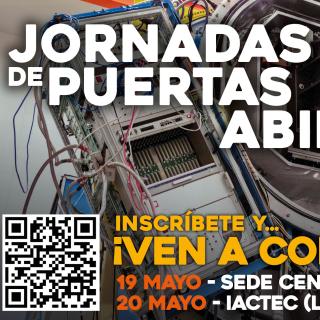This astronomical event will be broadcast live in the early hours of January 3rd from the Canary Observatories, via the sky-live.tv channel, with the collaboration of the European Project Interreg EELabs and the Innovation Service of the Cabildo of the Island of La Palma.
After the impressive data of the activity of the 2020 Geminids (the last major meteor shower of the year) the expectations for the Quadrantids are very high, even though this time the Moon will make it hard to see the fainter meteors. Usually the Geminids and the Quadrantids show activity approaching 100 meteors per hour (ZHR, zenith hourly rate) and they stay pretty constant year by year (Quadrantids’ activity in2020 on IMO)
The Quadrantids show their peak activity during the first week of January-For 2021 the maximum is expected at 14h30m UT on January 3rd, when the constellation of Bootes will be high in the sky. The final activity of the meteors is expected to be, on average, one every four minutes, some of them bright if we are in a dark place with a clear horizon.
Because the radiant, the point in the sky from which the meteors appear to radiate, is found quite close to the Great Bear, in fact in the constellation of Bootes, where the constellation of Quadrans Muralis used to be depicted, this shower si called the Quadrantids, and they cannot be seen from the southern hemisphere.
The Quadrantids and the Geminids are special meteor showers
The so-called “shooting stars” are really tiny particles of dust, of various sizes, some smaller than grains of sand, which the comets leave behind along their orbits round the Sun. The resulting stream of particles (called meteoroids) which are caused by the warming up of the comet by heat from the Sun, is dispersed on the comet’s orbit, which is crossed every year by the Earth as it orbits the Sun- During the encounter the particles of dust disintegrate as they enter the Earth’s atmosphere at high velocity, creating the bright streaks which scientists call meteors. This is the case for the majority of the showers, but not for the Quadrantids or the Gemínids. There is no comet whose trajectory coincides with the clouds of dust in either case. The generators of these meteor showers are asteroids, 3200 Phaeton for the Geminnids, and 2003EH for the Quadrantids.
Live from the Canary Observatories
Within the outreach initiatives of the European project Interreg EELabs (eelabs.eu), the sky-live.tv channel will broadcast live this meteor shower from the Canary Observatories of the IAC on the islands of Tenerife (Teide Observatory) and La Palma (Roque de los Muchachos Observatory) with the collaboration of the Innovation Service of the Cabildo of La Palma, of the MAGIC telescopes, and of the Large Sized Telescope (LST-1) of the Cherenkov Telescope Array Observatory (CTAO)
The assignment is for the early hours of next Sunday, January 3rd at &:00 UT (local time in the Canaries) which is 7.00 CET (local time in Europe) on https://youtu.be/2LXp9xRgH7A
“After the great show by the Geminids it should not be too great an effort to get up at six in the morning. The activity of the Quadrantids for 2021 should be close to 100 meteors per hour, so that we will surely see an attractive meteor shower” says Miquel Serra-Ricart, and astronomer at the IAC.
EELabs (eelabs.eu) is a project funded by the Program INTERREG V-A MAC 2014-2020, co-financed by the FEDER (European Fund for Regional Development) of the European Union, under contract number MAC2/4.6d/238, Within EELabs there are five centres in Macaronesia (IAC, ITER, UPGC, SPEA-Azores, SPEA-Madeira). The objective of EELabs is to create laboratories to measure the energy efficiency of the artificial night-time lighting, in protected natural areas of Macaronesia (the Canaries, Maderia, and the Azores).
Three Spanish supercomputer centres,; the Extremadura Centre of Advanced Technology (CETA-CIEMAT), the Consortium of University Servers of Catalonia (CSUC) and the Instituto de Astrofísica de Canarias (IAC) collaborate in the distribution of the broadcast on the web portal (sky-live.tv).
Audiovisual material
- The best Cuadrantids of 2020 (https://flic.kr/p/2iaZdr7)
- Images and videos of meteor showers (https://flic.kr/s/aHsjH2BFa4)
- Journey to a comet, -formation of meteoroids: https://youtu.be/iCoqxLjMmmU
- Simulation of the orbit of the Quadrantids: https://www.meteorshowers.org/view/Quadrantids
- Star counters and app (www.contadoresdeestrellas.org)
